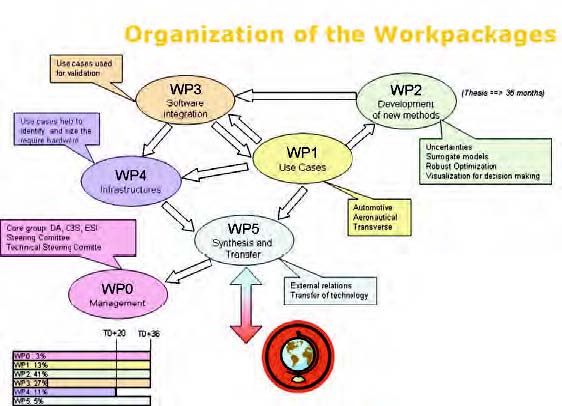Coordinator :
Call :
Status :
SYSTEM@TIC Working group:
Start date :
Finish date :
Duration :
Total amount :
Aid amount:
Members involved in the project :
To download the Project sheet,
The CSDL project (Complex Systems Design Lab) aims at developping a comprehensive
collaborative environment for decision making at the earliest stage of a project. At this
stage that simulation tools are the most strategic to obtain the best design possible by
exploring in a systematic manner the crucial parameters to optimize the system and
enable innovation, by estimating risks and uncertainties through an anaylis in depth of
robustness criteria, and provoding tools enforcing the coherence across all the levels
of models and permitting better decisions thanks to an accurate interactive synthesis
of the necessary information.
The tools used for the design of complex systems in the upstream phases must:
- facilitate the exploration of the design space;
- provide quantified robustness criteria and tradeoffs between the different design options
- synthetize efficiently all the generated knowledge to support decision making
- allow to do all the above in a collaborative environment.
The scientific and technological challenges are:
- the technologies to generate in a systematic manner a hierarchy of interoperable surrogate models;
- the methodologies and techniques to compute robustness criteria and tradeoffs between different technologies;
- the dynamic management of the level of fidelity of the models based on the impact of the decision to be made and the associated level of risk;
- the synthesis of results through interactive visualization to support decisionmaking.

The use cases from the aeronautical and the automotive industry have been defined. The scientific as well as the process integration challenges have been identified.
|
